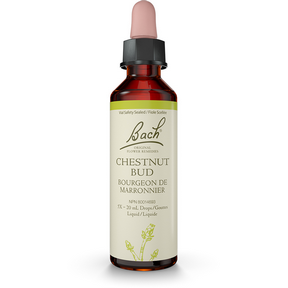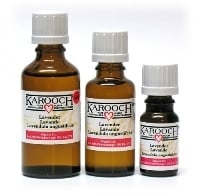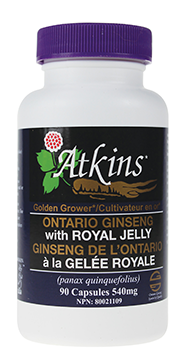Posted June 5, 2010
Food allergies affect more than 12 million Americans, yet safe-food selections are still limited and prices can be double those of “normal” foods.
Dealing with celiac disease or food allergies (primarily dairy, egg, soy, wheat, peanut, tree-nut, fish and shellfish) is enough of a challenge without the extra expense and time investment required. Quickie supermarket trips can become tedious sessions of label reading. Grocery bills may triple and special foods may taste bland. Creating an allergy-free or celiac diet takes time and patience, but there are ways to make the process cheaper and easier.
Here’s are 13 tips on how to manage the extra costs of food allergies.
1. Meal Planning
Every article about reducing food costs begins with a recommendation to plan ahead. Cooking with allergy-safe foods, however, requires even more planning. Until you’ve developed a solid repertoire of safe recipes and products, it’s easy to overspend. Invest some time in researching basic recipes that require a minimum of ingredients and can be prepared easily. You’ll be less tempted to overspend on prepared safe foods or eating out.
2. Read Labels Carefully
Check labels carefully to make sure you’re not buying unsafe products that end up in the garbage can. It’s a great help that FDA regulations require manufacturers list the top eight food allergens in plain language, either in the body of the ingredients or in boldface after the ingredients.
Be aware, however, that some foods may include hidden allergens. In particular, check prepared foods (anything made from more than one ingredient) for a warning that the food was made in a factory where your allergens may have been used on the same manufacturing lines.
3. Strike-Point Shopping
Strike-point shopping refers to buying large quantities of non-perishables when they’re on sale. Unfortunately, specialty allergy foods rarely go on sale, so keep a sharp eye out and stock up when you find sales.
4. Coupons
Online coupons are one of your best money-saving resources, no matter what your diet. One option is to sign up on BeFreeForMe (http://www.befreeforme.com/) to receive their e-mail newsletter with information about free samples and coupons.
You can also check aggregate sites, for natural and organic grocery coupons. Another excellent resource is Mambo Sprouts (http://www.mambosprouts.com/), which provides consumers with natural foods coupon booklets.
Some merchants and manufacturers offer coupons and samples on their websites and others will send them to loyal customers who email them directly. You’ll also find online coupons at some organic manufacturers, such as Organic Valley (http://www.organicvalley.coop/coupons/). The offerings may be limited but they do offer coupons for wheat-free and non-lactose products.
5. Buy in Bulk
The easiest way to buy allergy-free foods in bulk is to special order through your favorite stores. Ask the manager or customer service for assistance.
6. Buy Online
Online grocers like Allergy Grocer (http://allergygrocer.com/) offer loyalty programs with special discounts. Amazon.com sells allergy-safe products (primarily snacks) and periodically offers grocery deals. Remember to figure in shipping costs when ordering online.
7. Warehouse Clubs
Warehouse clubs don’t offer a wide selection of allergy-free options but you can sometimes find dairy-free alternatives, nut-free snacks and sausages.
8. Supermarkets
Supermarkets located in areas with a lot of children are more likely to carry a larger selection of allergy-safe foods at a better price. Specifically, you’ll find wheat- and dairy-free foods (cereals, snacks and pasta); nut-free cereals; sandwich spreads; snacks; baking mixes; frozen foods; and dry goods.
9. Specialty Stores
Look for the more reasonably priced, in-house, allergy-safe products at specialty stores like your local natural foods store. You can also find coupons on their websites, along with information about their allergy-safe offerings.
10. Ethnic Stores
Different national food traditions rely on allergy-safe grains and plants less common in American cooking. While you should never buy a product with a label you can’t read, some ethnic stores offer excellent prices on allergy-safe grains, fruits and vegetables.
11. Food Co-ops
Co-ops often have knowledgeable staffs who know their products and can direct you to the best prices. The bulk bins are often cheaper and tend to offer a wider variety of products than you’ll find in supermarkets. Be careful of cross contamination, however. Always use a clean scoop and dig below the surface when buying from bins.
Co-ops are a good source of corn-free starches, egg replacers, xanthan gum and wheat-free flour.
12. Medical Expenses
Emergency room visits can easily cost thousands of dollars. If you have extensive food allergies, it pays to explore high-risk insurance. It’s expensive, but frequently better than forking over for high-cost care. Paying with pretax dollars, via a supplemental health savings account, can help reduce your overall cash output. If you go this route, carefully estimate your expenses since some accounts don’t let you use unused funds after the year is up.
13. Epinephrine Auto Injectors
Many people with severe food allergies carry injectors containing this pseudo-adrenaline to reduce or eliminate reactions from accidental exposure. While such injectors are cheaper than a visit to the emergency room, many cost $100 and up. Check online for merchants, like DealMed (http://www.dealmed.com/), for savings of 25 percent or more. Don’t forget to check for prescription coupons before you buy.
Unfortunately, buying in bulk isn’t an option with injectors as most are only good for one year. It’s just not worth taking a chance.
—
(Coupon Sherpa is the penny pinching, coupon clipping, deal digging, Himalayan haggling, he-man of bargains.





